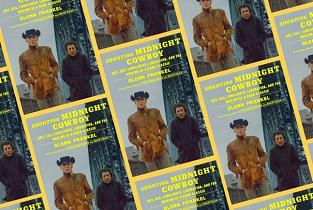When Psychiatry and the Media Colluded Against the Gays
In December 1963, a front-page article in the New York Times began with the newspaper’s equivalent of hitting the panic button: “The city’s most sensitive open secret—the presence of what is probably the greatest homosexual population in the world and its increasing openness—has become the subject of growing concern of psychiatrists, religious leaders, and the police.”
The article explored what it characterized as the two conflicting viewpoints in the contemporary discussion of homosexuality. On one side was the “organized homophile movement—a minority of militant homosexuals that is openly agitating for removal of legal, social, and cultural discriminations against sexual inverts.” They argued that gay people should be treated like any other minority group because homosexuality was “an incurable, congenital disorder” —although the Times hastened to add that “this is disputed by the bulk of scientific evidence.”
On the other side was the established psychiatric community, which argued for “an end to what it calls a head-in-sand approach to homosexuality.” This group cited “overwhelming evidence” from a nine-year study led by Irving Bieber of New York Medical College that homosexuals are not born but made—generally and inadvertently by overbearing mothers and weak-willed fathers—and that they could be cured “by sophisticated analytical and therapeutic techniques.” Fellow psychiatrist Charles W. Socarides warned that the drive by fledgling gay rights groups for social acceptance was worrisome because “the homosexual is ill, and anything that tends to hide that fact reduces his chances of seeking and obtaining treatment.”
“It was just the worst kind of New York Times article,” recalls historian Charles Kaiser, author of The Gay Metropolis, a landmark work. “It cited all of this so-called scientific evidence and expert opinion to support the deepest prejudices and preconceptions of its editors.”
No one in those days (or even now) expected extravagantly homophobic institutions like the Catholic Church to do anything other than consign gays and lesbians to the deepest and most creatively imagined circles of hell. But the condemnation of those in the liberal media and psychiatric community, who might have been expected to be supportive, or at the least understanding, was a bitter blow. Rather than expressing sympathy, these groups helped cement public fear and hatred of gays and lesbians and keep them stripped of civil rights.
The belief that gay people could readily seek treatment and a cure for their so-called disease led logically to the conclusion that those who chose not to were responsible for their own misfortune. Worst of all, their unshakeable loyalty to homosexuality was supposedly clear proof of their perversion. And those who wallowed mindlessly in gay promiscuity were a dire threat to vulnerable young people whom they would surely seek to entice into their ranks. They were not only sick; they were spreading their disease to healthy innocents.
The Times article was written during the postwar heyday of Freudian psychotherapy, when it seemed like virtually every Manhattanite of sufficient income was in analysis, and psychiatrists were the social and moral equivalent of the priesthood during the Middle Ages. “There was an inevitability about psychoanalysis,” wrote Timesliterary critic Anatole Broyard. “It was like having to take the subway to get anywhere.” After their anointment as evidence-based experts by the Times, Bieber and Socarides would go on to become publicly recognized authorities in the now-discredited field of sexual “conversion”—how to turn long-suffering homosexuals into responsibly straight husbands and fathers.




